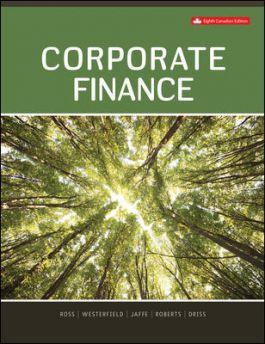Question
QUESTION 1 The price of an option is also referred to as Offset Strike price Exercise price Option premium None of the above QUESTION 2
QUESTION 1
The price of an option is also referred to as
| Offset | |
| Strike price | |
| Exercise price | |
| Option premium | |
| None of the above |
QUESTION 2
In general, the following contracts are a type of options EXCEPT
| Convertible bonds | |
| Forward contracts | |
| Callable bonds | |
| Warrants | |
| All may be considered options |
QUESTION 5
Consider a CALL option with the following data: S = 17, E = 20. What is the intrinsic value of this option?
| 0 | |
| -3 | |
| 3 | |
| None of the above |
QUESTION 8
Calculate the time value of the call option
| $2 | |
| $1.50 | |
| $4.75 | |
| $3.25 | |
| None of the above |
QUESTION 12
Suppose the underlying stock for an option contract is selling for $30. The option also has a strike price of $30 and will expire in 3 months. Which of the following is true regarding this option? [i] The call option is at the money [ii] The intrinsic value of the call is 0 [iii] The put option is at the money [iv] The intrinsic value of the put is 0 [v] Neither the call nor the put has any time value
| i, iii, iv | |
| iii, iv, v | |
| ii, iii, iv, v | |
| i, ii, iii, iv | |
| All are correct |
QUESTION 14
A CALL option is written on a stock currently selling for $16. The option's strike price is $15 and it expires in 30 days. This option is ______. A meaningful price for this option today is ____
| In-the-money; $1 | |
| Out-of-the money; $1 | |
| Out-of-the money; $15 | |
| In-the money; $2 | |
| None of the above |
QUESTION 21
In relating the Black-Scholes Option Pricing Model to the market value of equity, what is the intrinsic value of the "option" if the face value of debt is GREATER than the value of the firm?
| Zero | |
| Firm value - debt value | |
| Debt value - firm value | |
| Negative | |
| None of the above |
QUESTION 22
In relating the Black-Scholes Option Pricing Model to the market value of equity, what is the intrinsic value of the "option" if the face value of debt is LESS than the value of the firm?
| Zero | |
| Firm value - debt value | |
| Debt value - firm value | |
| Negative | |
| None of the above |
QUESTION 27
FOR THIS AND THE NEXT. Suppose you own 100,000 shares of a stock selling for $20 a share. You also purchased a PUT option for each share of stock for $4 per share. Strike price (exercise price) is $20. At option expiration, the stock is selling for $15. What should you do regarding the put?
| Sell the put | |
| Exercise the put | |
| Buy more put options to offset the loss on the stock | |
| Let the put option expire unexercised | |
| None of the above |
QUESTION 28
The transaction above is described as a "protective put hedge." Calculate the hedge profit, given the total number of shares.
| -$100,000 | |
| -$400,000 | |
| -$500,000 | |
| $100,000 | |
| None of the above |
QUESTION 29
An option on a stock has the following data: S = $45; E = $43.50; r = 1.75%; T = 55 days; standard deviation = 28%. Using the Black-Scholes model, the following results are obtained: d1 = 0.39051, d2 = 0.28182, N(d1) = 0.652, and N(d2) = 0.611. With all this information, we can conclude that this option is ___. According to the Black-Scholes model, the hedge ratio of this option is ___
| In-the-money; 0.391 | |
| Out-of-the-money; 0.652 | |
| In-the-money; 0.029 | |
| In-the-money; 0.652 | |
| None of the above |
Step by Step Solution
There are 3 Steps involved in it
Step: 1

Get Instant Access to Expert-Tailored Solutions
See step-by-step solutions with expert insights and AI powered tools for academic success
Step: 2

Step: 3

Ace Your Homework with AI
Get the answers you need in no time with our AI-driven, step-by-step assistance
Get Started


